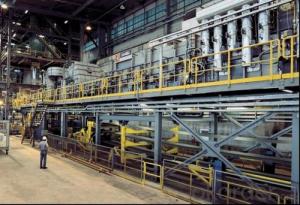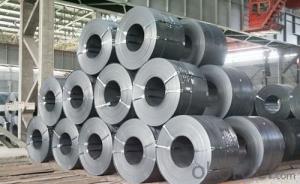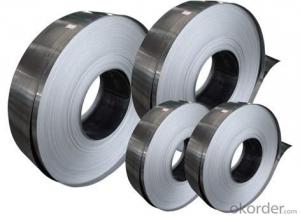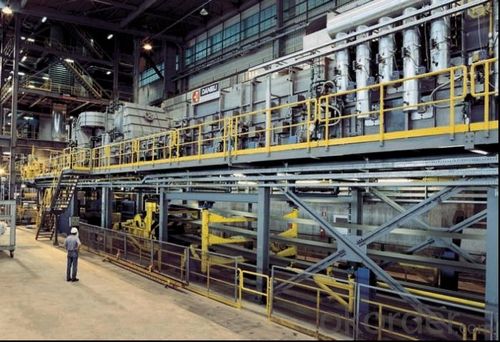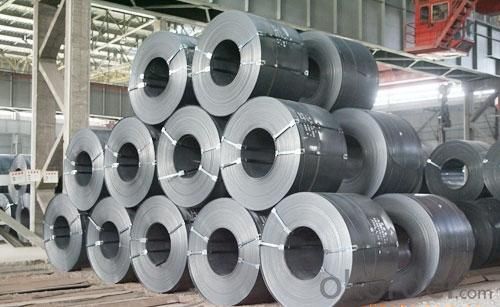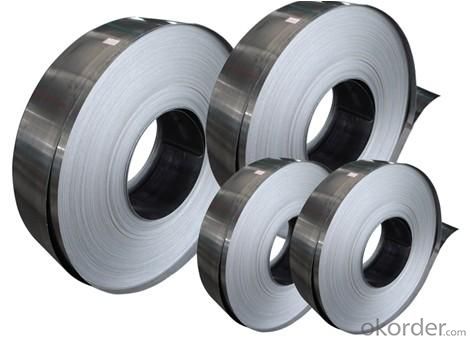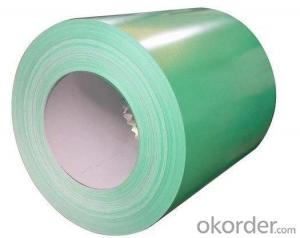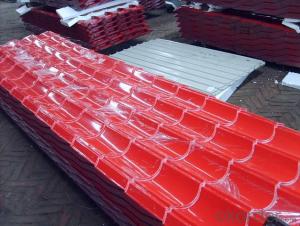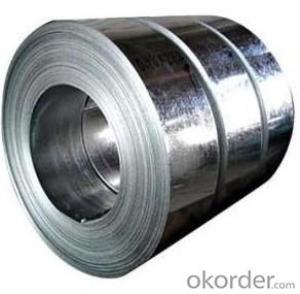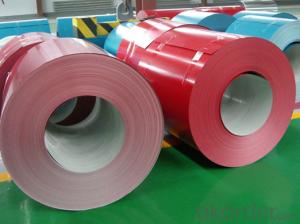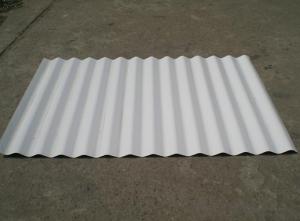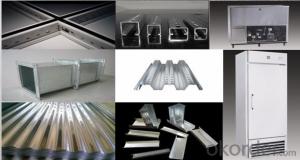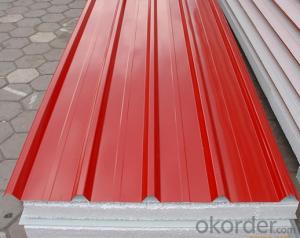Hot DIP Galvanized Steel Coils Regular 1000mm 1219mm 1250mm
- Loading Port:
- Shanghai
- Payment Terms:
- TT OR LC
- Min Order Qty:
- 25 m.t.
- Supply Capability:
- 9000 m.t./month
OKorder Service Pledge
OKorder Financial Service
You Might Also Like
Description:
EN 10147 Structure hot dip galvanized steel coil S250GD+Z, S350GD+Z (SGC340, SS275, SS340)/Custom Deep drawing hot dip galvanized steel coil DX52D+Z, DX53D+Z, S
Galvanized steel is taken cold rolled steel as the base metal, after continuous hot dip galvanizing process, the product produced is an excellent resistance to atmospheric corrosion coating steel coil, as the steel gets coated in layers of zinc and rust won't attach this protective metal; Cold rolled plate by hot-dip galvanizing may extend the service life of 15-20 years.
For countless outdoor, marine, or industrial applications, galvanized steel is an essential fabrication component. Hot dip galvanized steel is used in applications where steel may be exposed to weather, but where stainless steel is too expensive.
Application:
Construction
Manufacture anticorrosion, industrial and civil architecture roof boarding, roof grille
Light industries
Home appliance's case, civil chimney, kitchen utensils
Auto industry
Corrosion resistant parts of cars
Agriculture
Food storage, meat and aquatic products' freezing and processing equipment
Commerce
Equipments to store and transport materials, and packing implements
andard | EN 10142 | DX51D+Z, DX52D+Z, DX53D+Z |
JIS G3321 | SGCC, SGCD, SGCDD, SGC400 | |
ASTM A792M | CS type C, CS type B, DS, SS250 | |
Base Metal | Cold rolled steel coils SPCC, SPCD, SPCE, DC01, DC03, DC04, CS, DS, DDS, Q195, Q250, Q350 | |
Thickness | 0.14mm-3.0mm | |
Width | 600mm-1600mm | |
Coil ID | 508mm, 610mm | |
Zinc coating | 60g/m2-450g/m2 | |
Surface treating | chromium free passivation, chromium passivation, fingerprint resistant, oiled | |
Spangle types | Minimal spangle, zero spangle, regular and big spangle | |
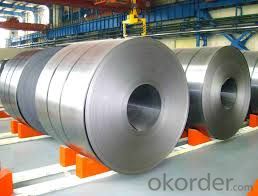
- Q: How do steel coils contribute to seismic resistance in structures?
- Steel coils contribute to seismic resistance in structures by providing strength and flexibility. When placed strategically within the structure, steel coils can absorb and dissipate the energy generated during an earthquake, reducing the impact on the overall structure. This makes the structure more resistant to seismic forces, preventing or minimizing damage that could occur during an earthquake.
- Q: Can cold rolled galvanized steel coils be acid washed after oxidation?
- Rolling at room temperature is generally understood as cold rolling, from a metallurgical point of view, below the rolling temperature at which the roll is rolled
- Q: What are the different types of steel coil surface defects?
- There are several different types of steel coil surface defects that can occur during the manufacturing or handling process. Some of the common types include: 1. Rust: Rust is a common surface defect that occurs when the steel coil is exposed to moisture or oxygen. It appears as a reddish-brown discoloration on the surface of the coil. 2. Scratches: Scratches are superficial marks that can occur during handling or transportation of the steel coil. They can vary in depth and severity, ranging from light surface scratches to deep gouges. 3. Stains: Stains are another type of surface defect that can occur due to exposure to chemicals or other substances. They can appear as discolored patches on the surface of the coil, and may be difficult to remove. 4. Roll marks: Roll marks are impressions or indentations that can occur during the rolling process. They are caused by uneven pressure or misalignment of the rolls, and can appear as lines or patterns on the surface of the coil. 5. Edge wave: Edge wave is a defect that occurs when the edges of the coil are not perfectly flat. It can cause the edges to appear wavy or uneven, and may affect the overall appearance and performance of the coil. 6. Oil spots: Oil spots are surface defects that occur when oil or lubricants used in the manufacturing process are not properly removed. They can appear as dark spots or patches on the surface of the coil, and may affect the adhesion of coatings or paints. 7. Pitting: Pitting is a defect that appears as small, shallow depressions or pits on the surface of the coil. It can be caused by factors such as corrosion, uneven cooling, or impurities in the steel. 8. Holes: Holes are more severe surface defects that can occur due to a variety of reasons, such as corrosion, mechanical damage, or manufacturing errors. They can range in size and can significantly affect the structural integrity of the coil. It is important to address these surface defects promptly to ensure the quality and performance of the steel coil. Regular inspections, proper handling, and appropriate surface treatments can help minimize the occurrence of these defects.
- Q: What are the typical lead times for ordering steel coils?
- The typical lead times for ordering steel coils can vary depending on various factors such as the type and size of the coil, the supplier's production capacity, and the current market conditions. However, on average, lead times for ordering steel coils can range from a few weeks to several months. For standard-sized steel coils that are readily available in the market, lead times are generally shorter and can range from a few weeks to a couple of months. This is because suppliers often maintain a stock of these commonly used coil sizes to meet immediate customer demands. However, it's important to note that lead times can still be influenced by factors like transportation and logistics. On the other hand, if you require custom-made or non-standard steel coils, lead times can be longer. These coils usually involve additional processes such as specialized cutting, shaping, or coating, which may require more time for production. Lead times for custom-made steel coils can range from a few months to even six months or more, depending on the complexity of the specifications and the supplier's production capabilities. It's worth mentioning that lead times can also be affected by external factors like market demand and availability of raw materials. During periods of high demand or when there are supply chain disruptions, lead times may be extended as suppliers need to adjust their production schedules accordingly. To accurately determine the lead times for ordering steel coils, it is recommended to reach out to specific suppliers or manufacturers. They will be able to provide you with the most up-to-date and accurate information based on your specific requirements and the current market conditions.
- Q: ive made lots of knives but they are dark and not shiny. how do i polish a knife and make it shiny
- Look for buffing compound at the hardware store. Home depot lowe's od even Wal-mart/ There is a compound for steel and for iron. I t will not make iron real shinny but it will make it look good. This stuff is to be used with a buffing wheel but I have used it on rags and it work great.
- Q: I am a complete idiot when it comes to anything musical, so please forgive me if this is a stupid question. I bought my son his first guitar, acoustic and didnt realize until after I purchased it that it has steel strings. Can I have the strings changed from steel to nylon???
- Nylon strings are more commonly used for classical style acoustic guitars, and most standard acoustics are set up to use steel strings. Nylon strings have less tension than steel strings so the sound won't be as full as steel strings. You may also notice some loud vibration from the top of the guitar since the strings don't have the proper tension. A guitar made for nylon strings uses thinner wood and is braced differently than one made for steel strings. The nylon strings won't put enough energy into the steel string guitar to make it vibrate correctly and develop the volume and harmonics that steel strings would. EDIT: To answer the second part of your question, it doesn't really matter what type of strings a beginner learns on. Nylon strings will be a little softer on the fingers, but once you build up calluses on your fingers it doesn't hurt anymore. There is no distinct advantage to a beginner learning with nylon strings as opposed to steel strings.
- Q: What are the various surface finishes available for steel coils?
- There are several surface finishes available for steel coils, each with its own unique properties and applications. Some of the most commonly used surface finishes for steel coils include: 1. Hot rolled: This finish is achieved by rolling the steel at high temperatures, which creates a rough, scale-like surface. Hot rolled coils are typically used for structural applications, such as construction materials and industrial machinery. 2. Cold rolled: In contrast to hot rolled coils, cold rolled coils are rolled at room temperature, resulting in a smoother and more refined surface. Cold rolled steel is often used in automotive and appliance manufacturing due to its superior surface finish and dimensional accuracy. 3. Galvanized: Galvanizing is a process that involves coating steel with a layer of zinc to protect it from corrosion. Galvanized steel coils have a shiny, metallic appearance and provide excellent corrosion resistance, making them suitable for outdoor applications, such as roofing, fences, and gutters. 4. Electro-galvanized: Similar to galvanized steel, electro-galvanized coils are also coated with a layer of zinc. However, the coating thickness is typically thinner and achieved through an electroplating process. Electro-galvanized steel coils offer good corrosion resistance and are commonly used in the manufacturing of electrical appliances, automotive parts, and construction components. 5. Pre-painted: Pre-painted steel coils are coated with a layer of paint or polymer film on the surface. This finish provides both protection against corrosion and aesthetic appeal, allowing for a wide range of color options. Pre-painted steel coils are extensively used in the construction industry for applications like roofing, cladding, and wall panels. 6. Stainless steel: While not technically a surface finish, stainless steel coils have their own unique properties that make them suitable for various applications. Stainless steel coils are highly resistant to corrosion, heat, and chemical damage, making them ideal for industries such as food processing, medical equipment, and marine applications. These are just a few examples of the various surface finishes available for steel coils. The choice of finish depends on factors such as the intended application, desired appearance, and level of corrosion resistance required.
- Q: hi i was doing a little history project on guns. i was just wondering if anyone could help me find out what material was used before steel and why this material wasnt as good as steel ( its faults)thanks for your help
- Gunmetal is a specific type of brass
- Q: What is the average lead time for receiving replacement steel coils?
- The average lead time for receiving replacement steel coils can vary depending on various factors such as the supplier, location, and specific requirements. It is recommended to contact the supplier directly for an accurate estimation of the lead time.
- Q: I know that the steel is significantly harder than when air cooled, but why is the quenched steel harder?
- Quenching results in smaller grains than air cooled. This means more boundaries, which means harder steel.
Send your message to us
Hot DIP Galvanized Steel Coils Regular 1000mm 1219mm 1250mm
- Loading Port:
- Shanghai
- Payment Terms:
- TT OR LC
- Min Order Qty:
- 25 m.t.
- Supply Capability:
- 9000 m.t./month
OKorder Service Pledge
OKorder Financial Service
Similar products
Hot products
Hot Searches
Related keywords
